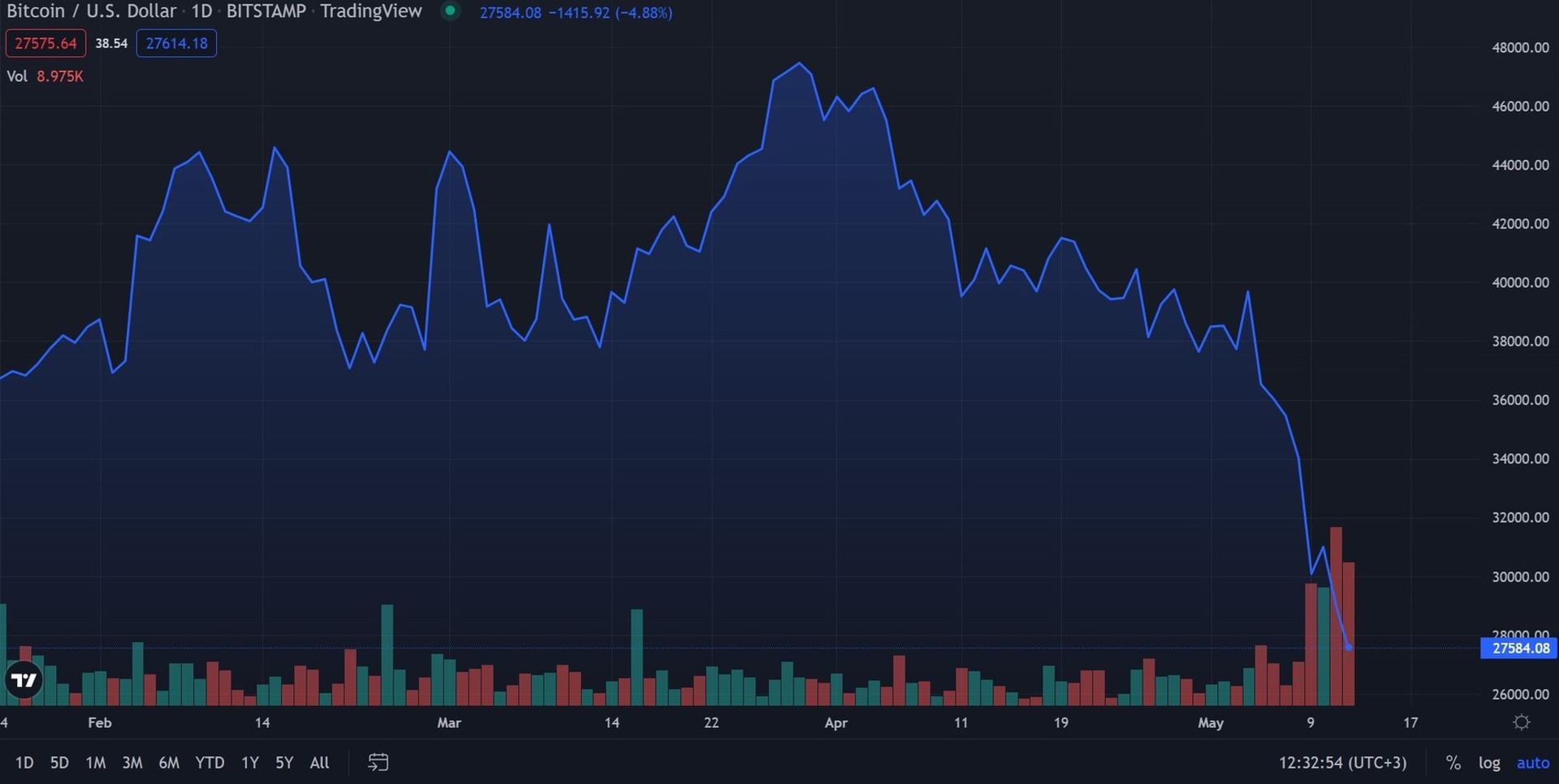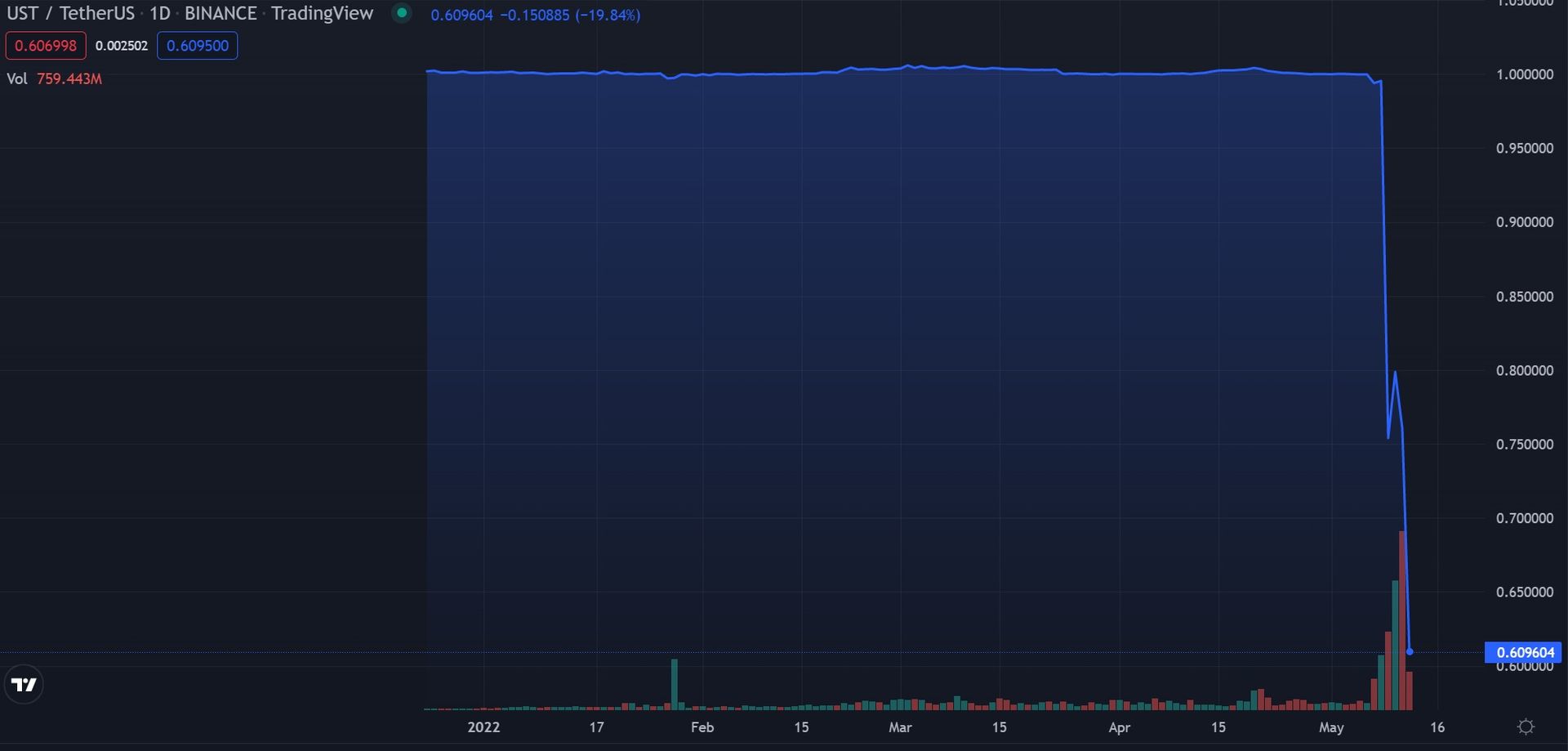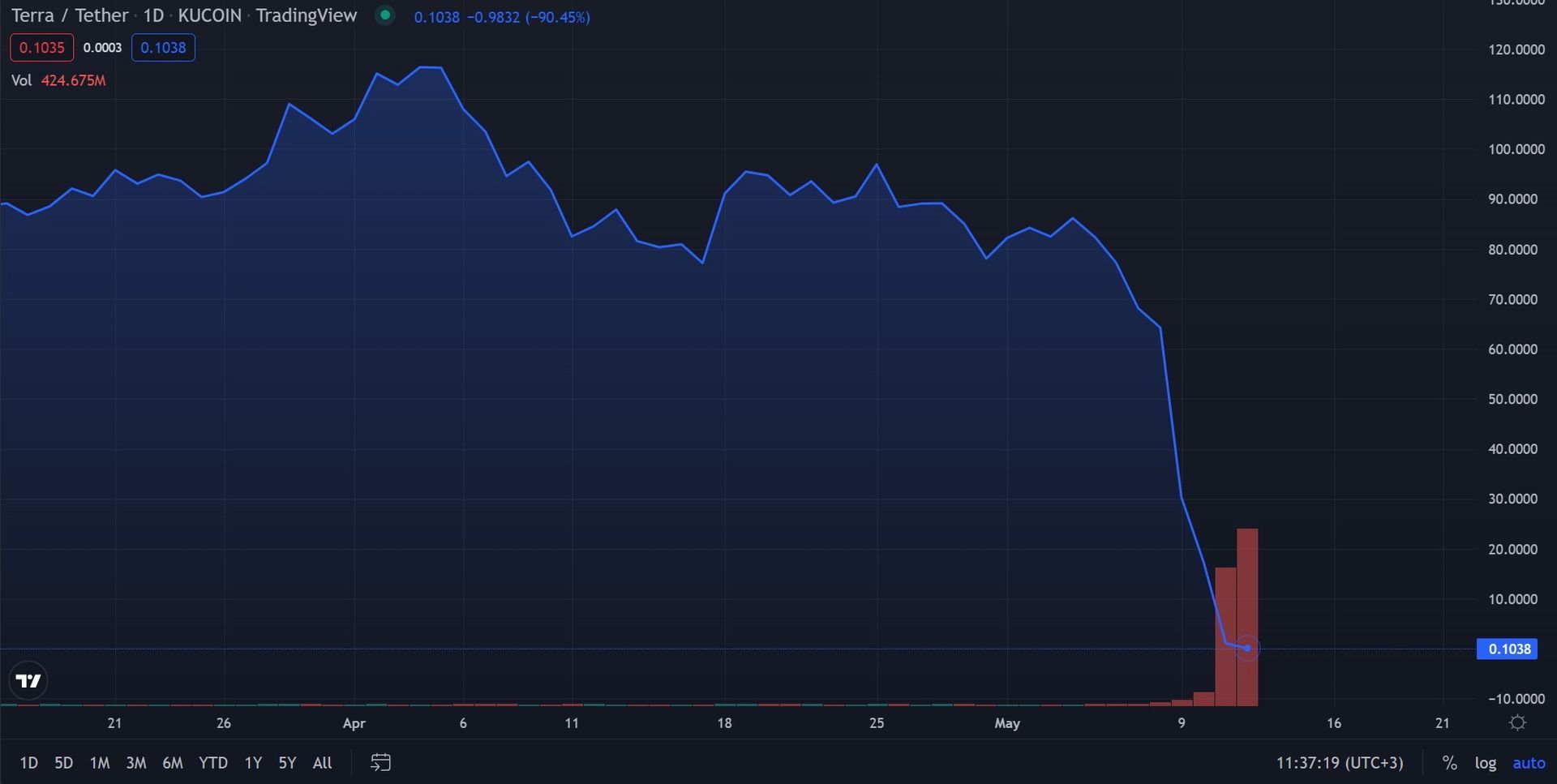Today we are going to discuss how Bitcoin, Tether and other cryptocurrencies are affected from Terra Luna crash. In Asian hours, Tether (USDT) tumbled to 97 cents, losing its parity with the US dollar.
Terra Luna crash affected Bitcoin, Tether and other cryptos
Bitcoin (BTC) dropped to $25,400 this week after losing the $27,000 support level and dropping to levels not seen since December 2020.
Traders sought to liquidate USDT for US dollars as poor sentiment in crypto communities grew. On Monday, TerraUSD (UST) de-pegged itself to a price of just 22 cents, despite planned $1 levels, while the USDN stablecoin on Waves showed signs of strain on Wednesday night.

Despite the fact that Tether’s CTO Paolo Ardoino confirmed on Twitter today that Tether is “is honouring USDt redemptions at 1$,” the sell-off continued. But why did Terra Luna crash?
GM
Reminder that tether is honouring USDt redemptions at 1$ via https://t.co/fB12xESSvB .
>300M redeemed in last 24h without a sweat drop.— Paolo Ardoino 🍐 (@paoloardoino) May 12, 2022
Cryptocurrency markets continued their declines Thursday due to Terra Luna crash, with Bitcoin plunging below $27,000 for the first time in over 16 months. With concerns about rising inflation and the failure of a controversial stablecoin project, cryptocurrency tumbled further into losses.
Bitcoin price
Bitcoin tumbled to a low of $26,595.52 this morning, the first time it has dropped below $27,000 since December 30, 2020. Bitcoin was trading at $27,061 as of 1:30 a.m. ET today, down 15% in the last 24 hours. At the time of writing Bitcoin is trading at $27,584, according to TradingView.

The value of Ether, the second biggest cryptocurrency, fell below $2,000 for the first time since July 2021 due to Terra Luna crash. Ether was down 23% at $1,852.
At a time when stock markets have dropped due to fears of rising prices and a worsening economic climate, investors are fleeing from cryptocurrencies.
The steep increase in costs, coupled with the ongoing trade war, have given traders a case of sticker shock. The American inflation data released on Wednesday revealed that prices for goods and services rose 8.3% in April, surpassing expectations and approaching the highest level in 40 years. The fall of contentious stablecoin platform Terra also weighed on investors’ minds.
UST price
The price of UST, or TerraUSD, was supposed to reflect the value of the dollar, but after Terra Luna crash, it plummeted to less than 30 cents Wednesday, spooking investors in the so-called decentralized finance industry. At the time of writing UST is trading at $0,606904, according to TradingView.

Stablecoins are the banking accounts of the cryptocurrency market, with virtually no regulation. Digital currency investors frequently turn to them for stability during market volatility. However, as holders have fled for the door in droves, UST, a “algorithmic” stablecoin that is based on code rather than money held in a reserve, has struggled to maintain a consistent value. At the time of writing UST is valued at $0.6096.
Terra Luna price
In just 24 hours, Luna, another Terra token that has a floating price and is designed to counteract UST price fluctuations, lost 97 percent of its value. Currently it is trading at around 10 cents.

Investors are concerned about the consequences of Bitcoin’s futures market. In times of crisis, Terra creator Do Kwon established the Luna Foundation Guard, a fund worth billions of dollars that would help to sustain UST.
The worry is that the Luna Foundation Guard will sell a substantial number of its bitcoin holdings to protect its failing stablecoin. That’s a high-risk wager, especially because Bitcoin is so volatile. Earlier this year, we’ve tried to explain why Terra is buying Bitcoin for UST stablecoin reserve.
Fear among investors has only worsened on Thursday, when the value of Tether plummeted. The token dropped below $99 at one point. Economists have been warning for years that tether may not have enough reserves to keep its dollar peg if large numbers of customers cash out.





